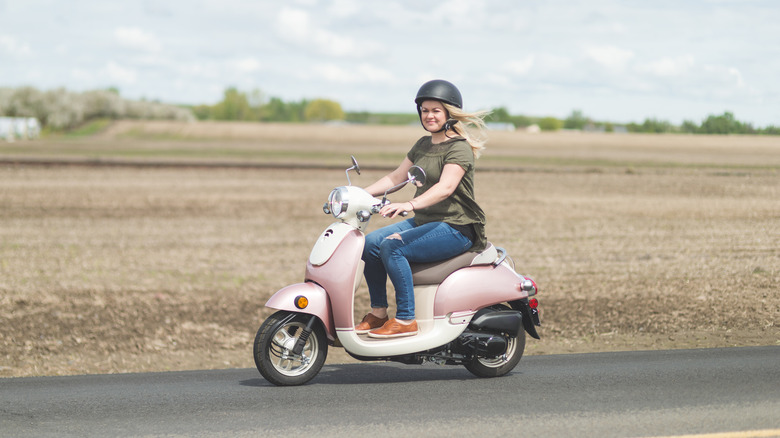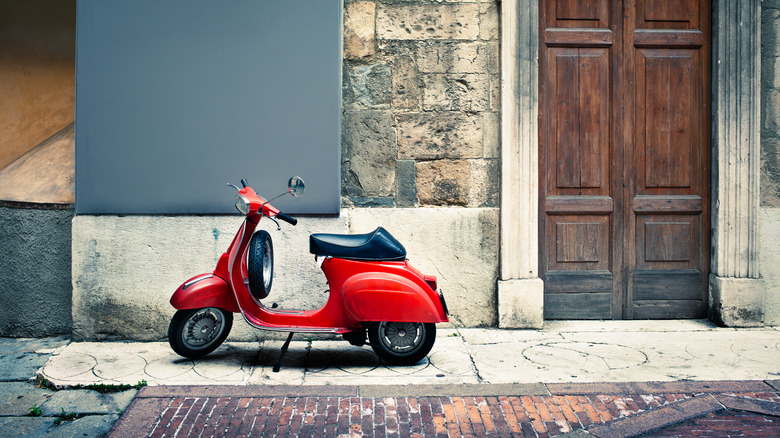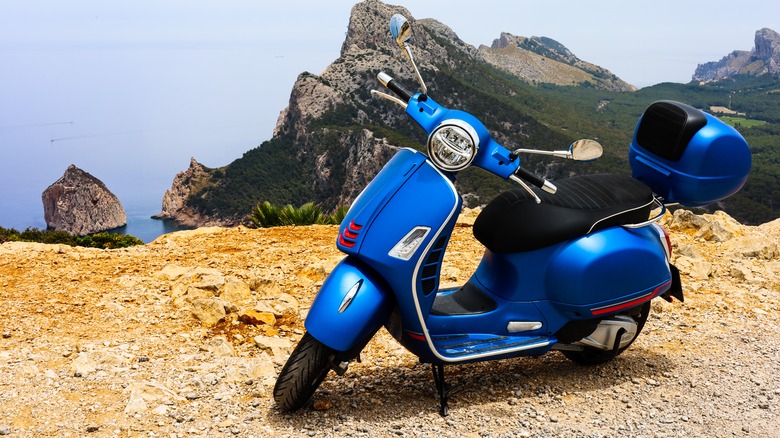
Fatcamera/Getty Images
By Brad Hill/
Vespas are still manufactured today in Pontedera, near Tuscany, Italy. It’s where the scooter has been manufactured since its inception after World War II in 1946 by a company that originally manufactured locomotives. However, the Vespa’s popularity required more plants to keep up with its worldwide demand. The Pontedera plant merely builds Vespas bound for America and Europe. The company eventually constructed a plant in Vietnam that ships its models to India and East Asia.
Since the creation of the first Vespa, the Vespa 98, the brand has designed many different models. Now, 11 different Vespa models, from the Primavera to the GTS Super, are sold in the United States. Each retains a similar physical design but offers a different riding experience. The Vespa Primavera, for example, has a max speed of 30mph and gets roughly 80 miles to the gallon. Meanwhile, the Vespa GTS Super can achieve 78mph with 73mpg.
No matter which model you go with, the Vespa is ideal for maneuvering through narrow streets or making that simple commute to work/school and back home. However, the famous motorized scooter fell out of popularity in the United States for a while after 1981. The brand didn’t regain its footing in the United States market until 2001. The rise in fuel prices around 2005 made Vespas and other motor scooters significantly popular, with one owner telling NBC, «I put about 20 miles a day on mine, and I only have to fill it up twice a month.»
Vespa’s origins

Deimagine/Getty Images
Enrico Piaggio, son of Piaggio & Co.’s founder Rinaldo, saw the need for a modern and affordable mode of transportation that could maneuver easily through the narrow streets of a post-war Italy. The first concept for the Vespa was known as the Paperino MP5 (Paperino is Italian for Donald Duck, MP5 is Moto Piaggio No.5), but Enrico wasn’t a fan of its design. That’s when he turned to aeronautical engineer Corradino D’Ascanio for something more intriguing.
There’s something transformative about a scooter created from aircraft components that were physical pieces of landing gears from Mussolini’s airplanes. Supposedly, that’s what happens when you contract an aeronautical engineer to design a two-wheeled vehicle. With the combined efforts of Enrico and D’Ascanio, Piaggio & Co. created Italy’s first mass-produced vehicle. Enrico even coined the scooter’s name when he thought its design resembled a wasp.
Some accounts contradict his actual words, but the Vespa website says he exclaimed, «It sounds like a vespa!» Vespa in Italian translates to wasp. Everyone agreed, and the name stuck. The Vespa eventually became the gold standard for motor scooters everywhere. It took Italy by storm, selling one million models in its first ten years. By 1960, four million Vespas were sold worldwide.
D’Ascanio couldn’t strike gold twice

Daniel Hicks/Shutterstock
D’Ascanio was initially reluctant to work on the Vespa design for two reasons. First, he loathed motorcycles because he saw them as bulky, dirty, and unreliable machines. He really wanted to design a car. Second, Ferdinando Innocenti was already cunsulting him to design a scooter. However, D’Ascanio acquiesced with Piaggio –probably because Piaggio argued that they weren’t creating motorcycles– and produced the design that earned the scooter its name.
Innocenti eventually went on to create the Lambretta, one of the most famous movie motorcycles of all time and a direct competitor of the Vespa. When the Vespa finally hit the market, the Vespa sold 10,000 units by its second year of production. However, the biggest push for sales came when the 1952 film «Roman Holiday» featured the Vespa. This pushed sales up to 100,000 units for that year, with the prior year reaching 60,000.
In 1957, D’Ascanio got his chance to conceptualize a car for Vespa. He designed the Vespa 400, powered by a 393cc two-stroke engine that made 14 horsepower. It was D’Ascanio’s response to the bubble car craze that started in 1955 when Isetta saved BMW from bankruptcy. However, the brand only produced 30,000 copies of the Vespa 400, and the production of the Austin Mini in 1959 killed the market. While few remember the Vespa 400, the Vespa name lives on synonymously with motor scooters in the 21st century.